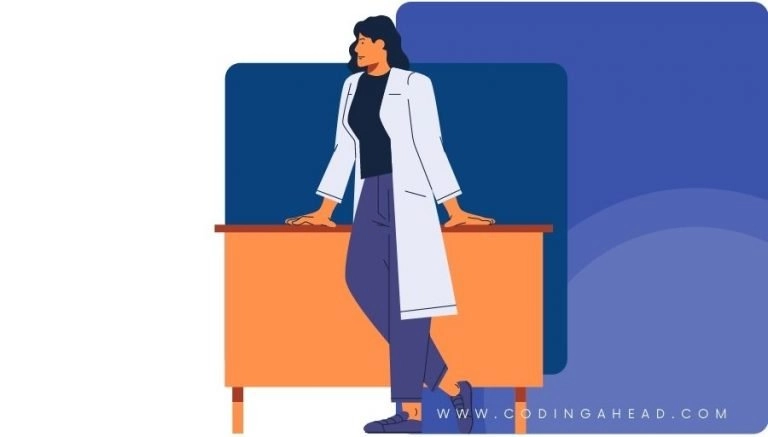How To Use CPT Code 69209
CPT 69209 refers to the removal of impacted cerumen using irrigation/lavage in a unilateral manner. This article will cover the description, procedure, qualifying circumstances, appropriate usage, documentation requirements, billing guidelines, historical information, similar codes, and examples of CPT 69209 procedures.
1. What is CPT 69209?
CPT 69209 is a medical procedure code used to describe the removal of impacted cerumen (earwax) from a patient’s external ear canal using irrigation or lavage techniques. This code is specifically used for unilateral procedures, meaning it is performed on only one ear.
2. 69209 CPT code description
The official description of CPT code 69209 is: “Removal impacted cerumen using irrigation/lavage, unilateral.”
3. Procedure
The 69209 procedure involves the following steps:
- The provider examines the patient’s ear and determines the presence of impacted cerumen.
- A syringe attached to a catheter is used to instill body-temperature water into the ear canal.
- The water is then drained or suctioned out with a syringe, removing the impacted cerumen in the process.
- The provider may also instill a small amount of antiseptic or antibiotic to prevent infection.
4. Qualifying circumstances
Patients who are eligible to receive CPT code 69209 services are those experiencing symptoms such as fullness in the ears, ear pain, itching, diminished hearing, or blockage due to impacted cerumen. The provider must determine that irrigation/lavage is the appropriate method for cerumen removal in these cases.
5. When to use CPT code 69209
It is appropriate to bill the 69209 CPT code when a provider performs a unilateral cerumen removal using irrigation or lavage techniques. This code should not be used for bilateral procedures or when instrumentation is required for cerumen removal.
6. Documentation requirements
To support a claim for CPT 69209, the following information should be documented:
- Patient’s symptoms and complaints related to impacted cerumen
- Provider’s examination findings, including the presence of impacted cerumen
- Details of the irrigation/lavage procedure, including the use of any antiseptic or antibiotic
- Outcome of the procedure, such as the successful removal of cerumen and any improvement in symptoms
7. Billing guidelines
When billing for CPT code 69209, follow payer guidelines for reporting a unilateral procedure. If the provider removes impacted cerumen from both ears, adhere to payer guidelines for reporting a bilateral procedure, such as appending modifier 50 to the code. Do not report CPT 69209 in conjunction with CPT 69210 when performed on the same ear.
8. Historical information
CPT 69209 was added to the Current Procedural Terminology system on January 1, 2016. There have been no updates to the code since its addition.
9. Similar codes to CPT 69209
Five similar codes to CPT 69209 and how they differentiate are:
- CPT 69210: This code is used for the removal of impacted cerumen requiring instrumentation, rather than irrigation/lavage, and is also unilateral.
- CPT 99202-99215: These codes are used for new or established patient office or other outpatient services, which may include non-impacted cerumen removal.
- CPT 99221-99223, 99231-99233: These codes are used for hospital inpatient or observation care, which may include non-impacted cerumen removal.
- CPT 99238, 99239: These codes are used for hospital inpatient or observation discharge day management, which may include non-impacted cerumen removal.
- CPT 99281-99285: These codes are used for emergency department services, which may include non-impacted cerumen removal.
10. Examples
Here are 10 detailed examples of CPT code 69209 procedures:
- A patient complains of ear pain and diminished hearing in their left ear. The provider examines the ear and determines that impacted cerumen is present. The provider performs irrigation/lavage to remove the cerumen.
- A patient experiences fullness and itching in their right ear. The provider identifies impacted cerumen and uses irrigation/lavage to remove it.
- A patient reports blockage in their left ear. The provider finds impacted cerumen and performs irrigation/lavage for cerumen removal.
- A patient complains of ear pain and diminished hearing in their right ear. The provider examines the ear, identifies impacted cerumen, and performs irrigation/lavage to remove the cerumen.
- A patient experiences fullness and itching in their left ear. The provider identifies impacted cerumen and uses irrigation/lavage to remove it.
- A patient reports blockage in their right ear. The provider finds impacted cerumen and performs irrigation/lavage for cerumen removal.
- A patient complains of ear pain and diminished hearing in their left ear. The provider examines the ear, identifies impacted cerumen, and performs irrigation/lavage to remove the cerumen.
- A patient experiences fullness and itching in their right ear. The provider identifies impacted cerumen and uses irrigation/lavage to remove it.
- A patient reports blockage in their left ear. The provider finds impacted cerumen and performs irrigation/lavage for cerumen removal.
- A patient complains of ear pain and diminished hearing in their right ear. The provider examines the ear, identifies impacted cerumen, and performs irrigation/lavage to remove the cerumen.



